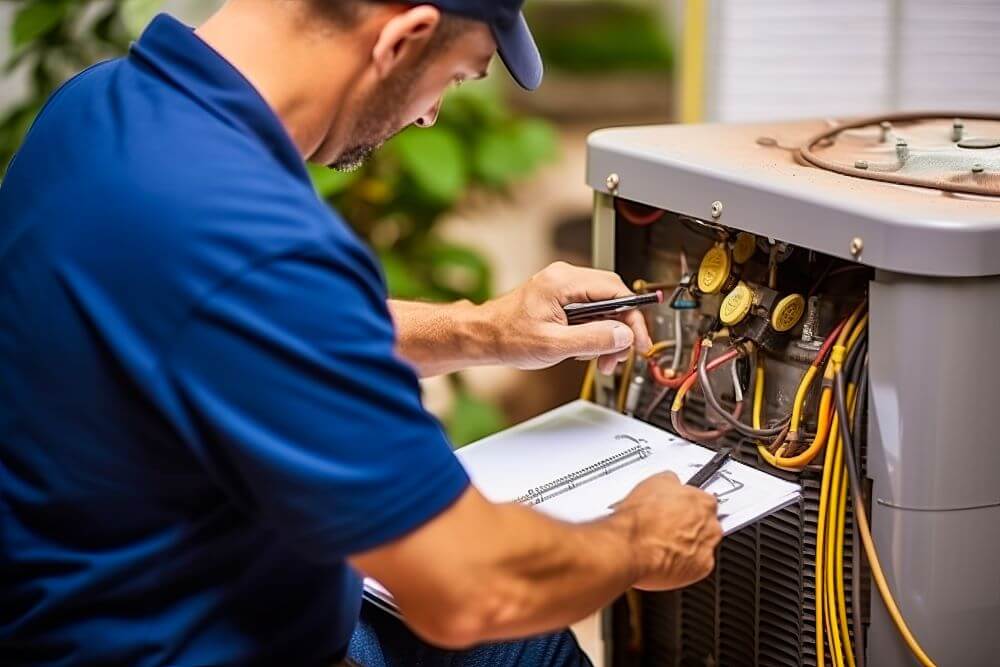Running an HVAC business isn’t just about fixing heating units and air conditioners anymore. The industry is catching up with the latest technologies causing more complex challenges. Even so, age-old industry issues persist even in today’s competitive market.
Understanding what you’re up against is key to overcoming obstacles. It prepares you to proactively address issues or hurdle common challenges with better chances of success. Here’s your guide to achieving business growth, whether you’re operating a startup or have been in the business for some time.
Addressing Labor Shortage
The HVAC industry is grappling with one of its biggest challenges: finding and retaining qualified workers. This labor shortage has created significant hurdles for service businesses trying to meet growing customer demands. Here’s how you can address this crisis:
Attracting and Retaining Skilled Employees
Keeping skilled employees requires more than competitive prices for labor. Develop attractive career paths, offer performance-based incentives, and create a positive work culture. Consider implementing loyalty programs for staff retention and invest in their professional development through specialized training.
Bridging Skill Gaps Through Training Programs
Your skilled workforce is your greatest asset. Implement comprehensive training programs and skill enhancement programs to develop skilled technicians from within. Partner with technical schools and create apprenticeship opportunities to nurture fresh talent. Regular, continuous training ensures your entire team stays updated with the latest technologies and industry trends.
The success of your HVAC business largely depends on the quality and dedication of your workforce. Building a strong team through strategic recruitment and development initiatives will set your business apart in this competitive industry.
Marketing Strategies for Growth
A comprehensive marketing approach combining traditional and digital methods can significantly impact your business success. Effective HVAC internet marketing is crucial for reaching potential customers and maintaining market share in today’s digital age.
First, you must develop a strong online presence through various digital marketing initiatives. These could include search engine optimization, social media engagement, and targeted advertising campaigns. Create valuable content that addresses common HVAC concerns and showcases your expertise in areas like energy efficiency and smart HVAC systems.
Don’t overlook the power of word-of-mouth referrals and community engagement. Build partnerships with local businesses, participate in home improvement shows, and leverage print media to reach customers who prefer traditional communication channels.
Creating a balanced marketing strategy that combines both digital and traditional approaches ensures maximum visibility for your HVAC business. This isn’t a one-off task, though. Regular analysis of marketing metrics helps refine your strategy and optimize your marketing investment.
Embracing Technological Evolution
The rapid advancement of technology presents both challenges and opportunities for growth in the HVAC industry. Staying current with these changes is essential for maintaining operational efficiency and market share.
Implement digital solutions: Adopt field service management software and accounting software to streamline operations. These tools provide real-time data and valuable insights into your business performance, helping you make data-driven insights for better decision-making.
Smart integration: As customer demands shift toward energy-efficient solutions, familiarize your team with smart thermostats and solar-powered HVAC systems. Understanding and installing these green technologies can significantly reduce energy consumption and energy bills for your customers while opening new revenue streams for your business.
Integrating technology into your operations and offerings prepares you for the future of the HVAC industry. Embracing these changes positions your business as a forward-thinking leader in the field.
Managing Seasonal Fluctuations
Most HVAC businesses struggle because of seasonal fluctuations in demand. Strategic planning is essential to maintain steady profit margins throughout the year.
You can achieve healthier cash flow by developing preventive maintenance programs. Create proactive maintenance packages that encourage regular maintenance during off-peak seasons. This approach helps stabilize your customer base and ensures consistent revenue while improving indoor air quality and system longevity for your clients.
Diversifying service offerings is another smart idea. Expand beyond basic heating systems and air conditioning services. Consider offering energy audits, replacement services, or specialized residential services focusing on energy usage optimization. These additional services can help maintain steady business during slower periods.
Enhancing Customer Experience
Businesses across all sectors are facing stiff competition. Prioritizing customer satisfaction could spell the difference between thriving and merely existing. Building strong customer relationships is crucial for long-term relationships and business sustainability.
To improve customer communication, establish multiple channels for customer service, including online booking systems and automated appointment reminders. Maintain an active online presence to engage with your customer base.
Develop comprehensive loyalty programs that reward repeat customers. Focus on creating high-quality services that exceed expectations, and use customer feedback to continually refine your service delivery.
Exceptional customer service remains the cornerstone of any successful HVAC business. Your commitment to customer satisfaction will drive referrals and repeat business, which is essential for sustainable growth.
Adapting to Market Changes
Your ability to adapt and evolve will determine your success in this dynamic industry. Staying competitive requires constant attention to market trends and industry challenges.
Monitoring industry updates through industry publications and professional networks. Understanding shifts in customer preferences and new technologies helps you make informed decisions about investments and service offerings. Always allocate resources to explore innovative solutions. These investments can give you a competitive edge while meeting the growing demand for sustainable solutions.
Your ability to anticipate and adapt to industry changes will determine your long-term success. Staying ahead of market trends positions you as an industry leader rather than a follower.
Final Thoughts
Success in the HVAC industry requires a balanced approach between solving old and current challenges. By focusing on these core growth drivers, you’re positioning your business for sustainable growth.
Remember that every challenge presents an opportunity—whether it’s implementing new digital solutions, exploring green technologies, or strengthening customer relationships. Stay committed to delivering value through high-quality services and continuous improvement, and you’ll find yourself well-equipped to thrive in this evolving industry.

